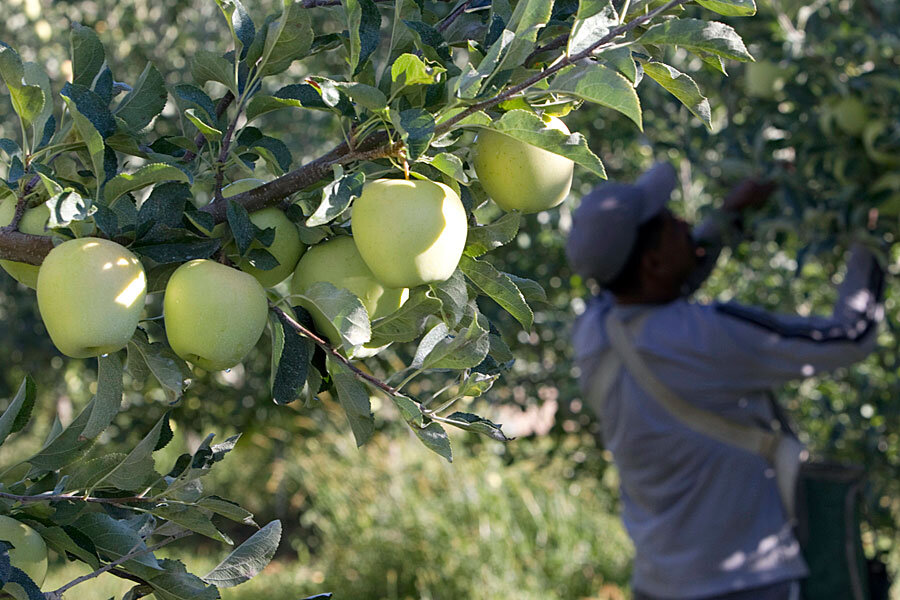How to save 600 million pounds of ugly apples
Loading...
Recently, I had the opportunity to visit one of the original anti-food waste and ugly produce-saving companies - Tree Top Inc. Since I grew up with Tree Top apple juice and applesauce, and now so does my son, I couldn’t wait to see where all these tasty apples come from! Before the founding of Tree Top in 1960, it was common for many Washington apples to be fed to animals or left to rot in the field if they were not cosmetically pretty enough for grocery stores. A cooperative of over 1,000 growers, Tree Top now saves almost 600 million pounds of ugly apples each year!
What Tree Top does with those imperfect, but perfectly delicious and nutritious apples is process them into apple juice, applesauce, and apple bits for oatmeal, among other products. Tree Top also processes another 400 to 600 million pounds of “every kind of ugly fruit you can imagine,” says Tree Top Communications Director Sharon Miracle. From pears and strawberries to pineapple and goji berries, the fruit is all delicious with slight blemishes or differences in color, shape, or size that otherwise identify them as ugly.
While Tree Top is known for apples (10% of all Washington apples sold), there is one variety that now stands out among the rest. Since being developed by the University of Minnesota in 1991, honeycrisp apples have been recognized for their crunchy and sweet taste. While at Tree Top, I visited Chief Orchards, owned by Ernie Edwards, one of the growers that is part of the cooperative. Chief Orchards’ most popular apple is the honeycrisp, with rows upon rows of the delicious fruit grown on trellises that help them expand up instead of out, meaning more apples per acre.
Space isn’t the only concern for an orchard of this size. Ernie’s son Clint Edwards hopes to run the orchard one day, and said that apples like cold nights and hot days, but not too cold or too hot. Planning for extreme weather is top of mind for Tree Top and its grower cooperative. “Our growers need drought-resistant trees; they need fruit that’s going to be okay with the triple-digit weather that is increasingly happening” says Miracle. To that end, Tree Top lends its support to the agriculture program at Washington State University, and one of the programs it is funding right now focuses on testing drought-resistant apple trees.
As we walked around Chief Orchards, I noticed some apples on the ground, which they cannot sell, and I asked Ernie what percentage of the harvest goes to waste. “We hope all of it gets sold to fresh market, but some go to juicers or peelers,” Ernie says. And thanks to Tree Top, only about 5 percent or less of his apples – the ones on the ground – are left at the orchard.
We also visited the Frosty Packing Plant where gala apples were being packed into supermarket bags and boxes. There is some serious technology behind sorting these apples including belts transporting apples in every direction, a machine that captures a picture of each individual apple from various angles for grading purposes,, waterslides for the apples to be washed, sprayers for a thin coat of wax on the outside of the apple, fans to dry the wax, a bagging machine for the apples that go into net bags, and boxes flying in on a clothesline-type contraption from above.
In the control room the grading of the apples happens in a complex computer system that looks like something out of a military defense system. There are six total grades in all for these gala apples: premium, one, two, three, juice and peeler. How can a computer system pick all this up? From the pictures taken, it can see color, weight, splits, sunburns, limb rub, bitter pit, etc.
At the end of the sorting process, the apples go down a conveyor belt to pass across a metal screen that’s like a chain link fence - only much nicer – that culls out the smaller fruits. You may be wondering what makes apples grade out and go to peeling, chopping, and juicing for Tree Top? Most frequently, it is something as simple as a sunburn changing the skin color, or a limb of the tree rubbing up against the apple and creating discoloration, Ernie explains. Sometimes size differences or misshapen curves can be the cause, which is where the fence-like screen comes into play.
Ernie has seen “high cullage in the past few years with the high temperatures they’ve been having,” but this year not quite as much with about 12-15 percent that goes to cows, juice, or peeler. Most of the cullage goes to Tree Top for ingredients that, in addition to being made into juice and sauce, are purchased by 20 of the top 25 food manufacturers in the world for use in breakfast foods, dried fruit, dairy snacks and other items.
The whole process has been great for their more than 1,000 growers, which see Tree Top’s profits returned to them each year from their ugly but delicious apples and other fruit. While there may be other companies processing ugly produce into delicious food, Tree Top has been successfully helping their growers for over 50 years and isn’t afraid to talk about how delicious ugly produce can be. That is why I’m proud to work with them this Apple Month on our #LoveUglyApples campaign to raise awareness and fight for ugly apples!
Join in the movement to save ugly produce and find out what you can do to help at my Ugly Fruit and Veg Campaign on Twitter, Instagram, and on Facebook.
This story originally appeared on Food Tank.







